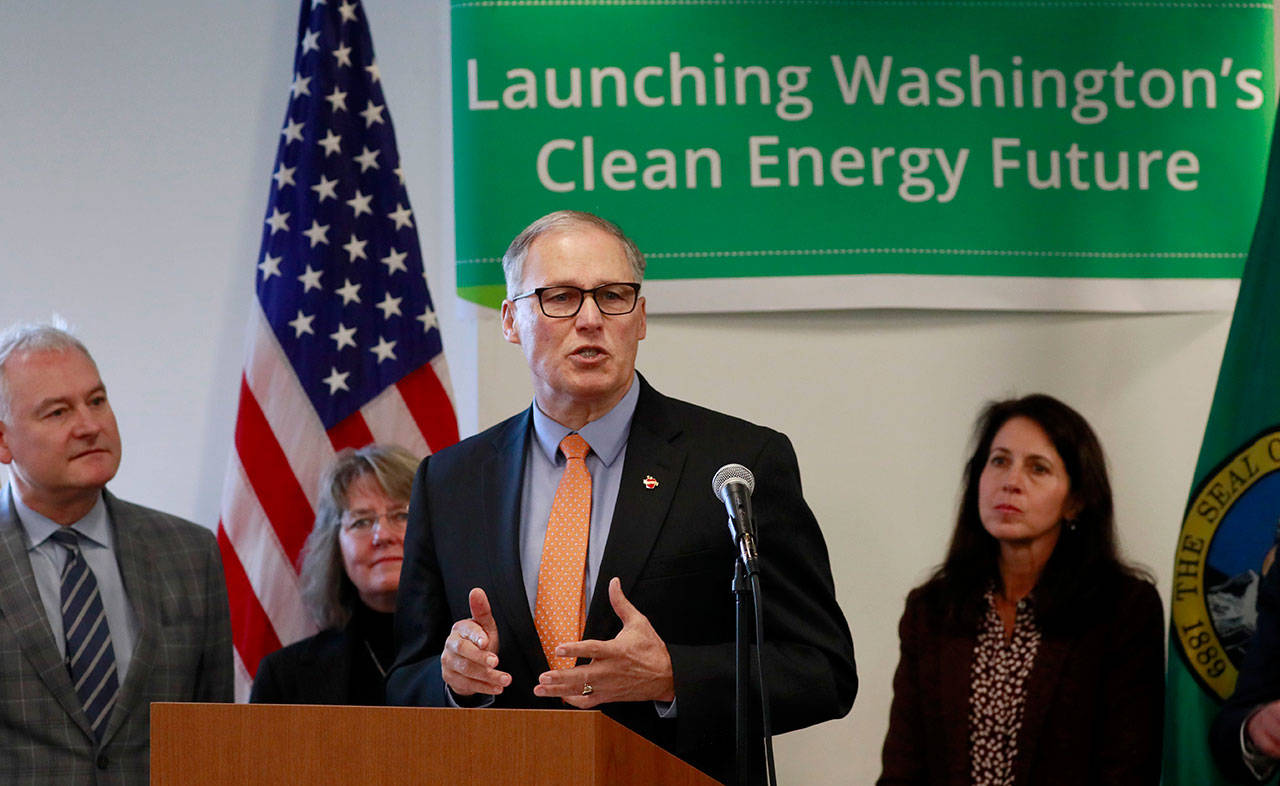By The Herald Editorial Board
If 2018 was the year voters rejected one path toward significantly reducing climate emissions in Washington state, 2019 could be the year that lawmakers — with support from most of those same voters — set out on climate action paths that could prove just as effective.
By more than 13 percentage points, voters in November handily rejected Initiative 1631, which would have imposed a fee on carbon emissions that would have supported carbon-reduction efforts. That loss required an unrelenting no campaign that raised a record-setting $31.5 million, almost all from the oil industry. Still, the uncertainty of what effect the carbon fee — which would have been the first such attempt at carbon pricing in the nation — might have had on transportation and energy costs sealed its defeat.
It would be a mistake, however, to assume that I-1631’s rejection reflected the belief among a majority of voters that climate change isn’t of deep concern or that the state’s residents won’t support meaningful steps toward reducing the greenhouse gas emissions that effect our health and contribute to climate change.
A poll of 1,200 state voters taken in the days before and after the Nov. 6 election found that 80 percent acknowledge climate change is happening and that nearly two-thirds — 64 percent — support action by the state to reduce carbon pollution. Most significantly, of those who voted against I-1631 as flawed but support climate action, 71 percent approve of a path that assures 100 percent clean electricity — no generation by fossil fuels — by 2045. Among all voters, 65 percent approve of the 2045 goal.
That’s notable, because that goal of 100 percent of electricity from clean sources is proposed among a package of legislation that is being pursued by Gov. Jay Inslee and others, including groups like Climate Solutions and Audubon Washington.
Inslee announced a climate agenda earlier this month that seeks reductions along three main paths: eliminating fossil fuels from the generation of electricity by 2045 or earlier; adopting a clean fuels standard similar to that in place in California, Oregon and British Columbia; and addressing the energy efficiency of new and existing buildings.
Those sectors — electricity, transportation and building efficiency — account for three-quarters of the state’s greenhouse gas pollution. The proposed legislation, the governor’s office says, would by 2035 reduce carbon emissions to 25 percent below the 1990 level and could reduce them by more than 80 percent by 2050.
All three paths are feasible and affordable.
Getting to 100 percent fossil-free electricity is within our grasp already. Washington has long had the advantage of hydropower as its major source of electricity. Coal-fired electricity already is being stepped down and will be eliminated by 2025. It and natural gas from fossil sources can by replaced through additional investments in solar, wind and energy storage and efficiency technologies. And a small percentage of natural gas from renewable sources can smooth out fluctuations in energy supply and demand.
While sources of natural gas generated from the methane produced by landfills and agriculture — such as dairy farms — still generate carbon emissions, the net effect is a carbon reduction because methane is a more harmful greenhouse gas than carbon dioxide.
The Snohomish County Public Utility District is well on the path toward fossil-free electricity — now nearly 98 percent — as are other public and private utilities in the state.
A clean fuel standard, similar to that in use elsewhere along the West Coast, would aid the transition to cleaner fuels, such as biofuels, by allowing refineries and other industries to use cleaner technology and use that as a credit against the deficits from carbon emissions. Washington refineries are now producing the fuels that California and Oregon are using for their programs. Adding Washington state as a market for those fuels would support and expand their production and those jobs.
And, where I-1631’s opponents were predicting immediate gas price increases of 13 cents a gallon or more if it had passed, Oregon’s experience with a clean fuels standard has shown price increases at the pump of less than a quarter-penny for gasoline and a third of a cent for diesel, Climate Solutions reports.
The switch from fossil fuel sources of energy for transportation and electricity won’t come without investments and changes in the way we do things, but avoiding these steps won’t guarantee continued low energy prices. Taking these steps, however, could keep costs reasonable if not reduce them.
A report prepared for the governor’s office and the state Office of Financial Management, found that the move toward a low-carbon economy could keep energy costs stable by 2030 and could reduce household energy spending by as much as $96 a month (in 2014 dollars) by 2050.
Recent reports from both the United Nations and U.S. government scientists and agencies warn of the increased costs from losses from natural disasters and from the actions necessary to mitigate the effects of a warming global climate.
A majority of voters made themselves clear they weren’t convinced that putting a price on carbon was the solution to climate change. State lawmakers, as they begin their work in a matter of days, need to hear from those same voters who still want action taken and that the legislation identified by Gov. Inslee and others has their support.
Talk to us
> Give us your news tips.
> Send us a letter to the editor.
> More Herald contact information.

























